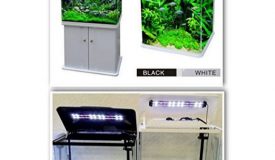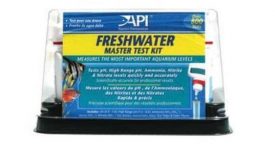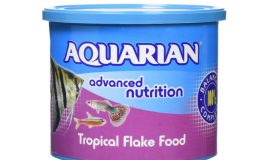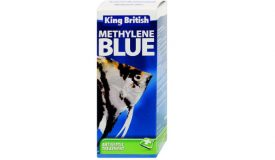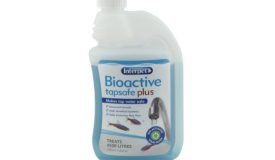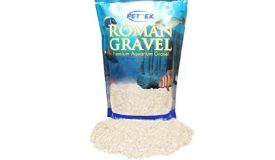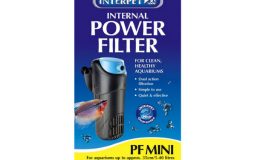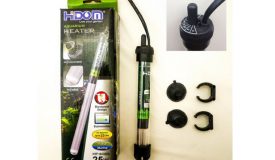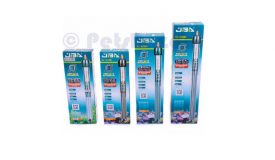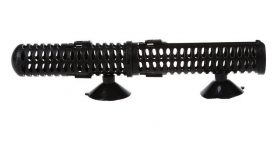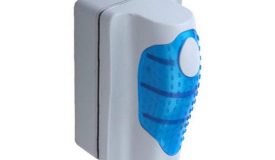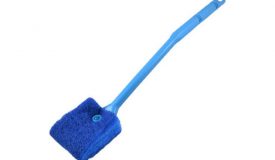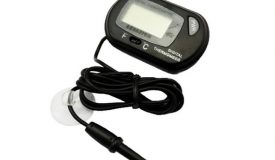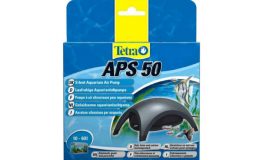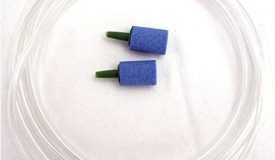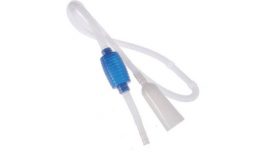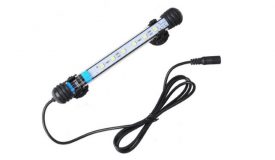While these crazy little creatures can be kept in a tropical fish tank with friendly tropical fish, African Dwarf frogs can also be kept alone more cheaply in their own tank, making them ideal pets.
African Dwarf Frogs are commonly found in pet stores and live entirely underwater, so you don’t need to worry about them jumping out of the tank and having a wander around your home. In fact, they won’t survive more than 20 minutes outside of water.
Because they have lungs and not gills, they need to be able to get to the top of their tank easily, to breathe air. Therefore, they should not be kept in tall tanks, as these may take them too long to swim to the surface, causing them to drown.
Their life expectancy is about 5 years, but they can live up to 20 years.
- They are often mistaken for the African Clawed Frogs, which grow much larger and are more aggressive.
- The way to tell these frogs apart is: the African Dwarf Frog has four webbed feet while the African Clawed Frog has two front claw like hands. The African Dwarf Frog has eyes at the sides either side of their heads, while the African Clawed Frog has eyes at the top of their heads.
- The African Clawed Frog also has a flat curved snout, while the Dwarf Frog has a more pointed one.
African Dwarf Frog are constantly on the go, resting for short periods of time which make them very appealing, they sleep for 12 hours of the day, but are nocturnal and more active at night. They prefer to spend most of their time at the bottom of the tank where they feel safer and also need places to hide; so plant coverage and ‘caves’ make them feel secure.
They are social frogs and while they can be kept alone, with other friendly fish in the tank, having more than one frog can be entertaining. If you do not want your frogs to mate and fill your tank with tadpoles, then it is best to get frogs of the same gender.
Female frogs are 40% bigger than their male counterparts, and have more pear-shaped bodies, while males are slimmer and more streamlined all the way down (see video above).
They need to be kept in warmer water, so will need a heater in their tank, set to around 25C. The pH of their water needs to be maintained at around 6.5 – 7.5, so a tropical tank is ideal for them.
Warning:
They can, but should not be held outside the tank, as they will not survive more than 25 minutes. Young children, particularly those under the age of 5, should also not be allowed to handle them at all, as all amphibians carry the risk of salmonella.
A secure lid is therefore needed to prevent young children getting their hands into the tank, or the tank should be kept at a height where children cannot open the lid.
Aquatic frogs will eat almost anything, alive, dead or decaying as they are scavengers, including left over fish food. But they are carnivores, so are unlikely to eat plant material. They will eat small fish if they are caught, but frogs are generally slow swimmers and are not predatory – in other words, they will not hunt for their food. They can eat shrimp, but are unlikely to, as shrimp tend to be much faster and more agile than they are. They should be fed a variety of food including blood worms, brine shrimp and can also be given reptomin sticks, broken in half.
They need to be fed once a day, for 6 days of the week. As frogs’ eyesight are not the greatest, they may not always see their food and can starve. In which case, you may need to feed them with plastic tweezers, if you notice they have not been eating.
Poor water conditions are the biggest killer of these frogs, so while they are easy to keep, you will need to keep an eye on pH and ammonia levels in their tank, using water tester kits.
They also do not like strong currents, so your filter output will need to be low, to avoid strong currents.
As they have no teeth and tongues, they swallow their food. So anything small enough to fit in their mouth and not fast enough to get away, will be eaten, including baby shrimp, baby snails, small fry or very small fish.
They can be kept in the same tank with other tank mates including:
- A Betta fish – as they are too big to eat
- A colony of adult cherry shrimp, provided you don’t mind losing the odd baby now and then, as they are likely to be eaten by accident.
- Large aquatic snails, provided they are not baby snails, which will fit into a frog’s mouths.
- Tropical fish including: guppies, small catfish, tetras, swordtails and platies- but you will need a much larger tank to house these which will add to your costs considerably – Tropical fish are also not as easy to keep, as some need specific water parameters.
Frogs should not be kept with goldfish in general, as goldfish can survive at much colder temperatures being cold water fish and also foul the tank too quickly for a frog’s liking. Goldfish also need to be kept in much larger tanks too, unless you keep a really small fantail goldfish.
Although aquatic frogs can be kept in quite small aquariums – in order to ensure you can fit a filter and a heater easily, with plants and a ‘cave’ for hiding in, a 25 litre tank or 5 gallons should be the minimum size to be considered, not a nano tank.
Other things you will need for your frog tank set up are:
- A good filter,
- A light
- Gravel
- A heater
- A thermometer
- A net
- A siphon gravel cleaner or turkey baster
- A bucket
- Tubing
- Live plants /rocks/ log (optional)
- Water dechlorinator / water conditioner
- Plastic tweezers to feed your fish sometimes
- Variety of frog food – Reptomin floating sticks, pre-soaked freeze dried bloodworms, brine shrimp, fish flakes, pellet food
- Water testing kit
Some the items you will require for your new pet can be found at the bottom of this page.
This is not a cheap tank to set up, but your maintenance costs will be kept lower by the fact that there will be no vet bills.
For the more information about the best aquatic plants for beginners read:
‘Live aquarium plants for beginners’
For more information about how to set up an aquarium read:
‘How to set up and run a healthy aquarium’
Some essentials you may require for your new pet
Click on the items to find out more.

